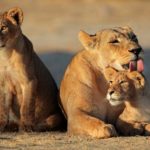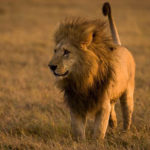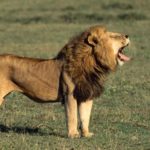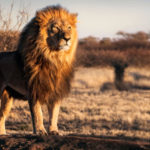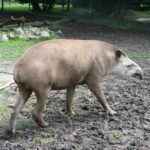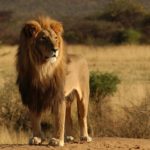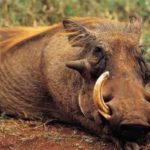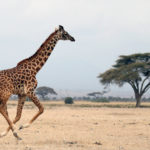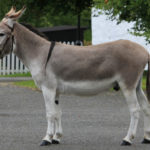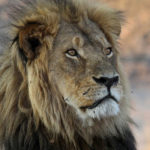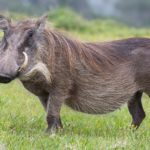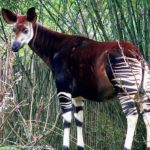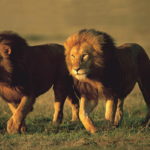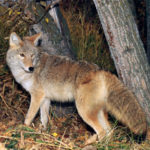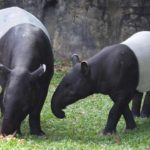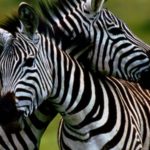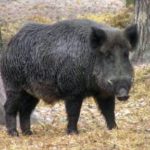Lion’s mane
 Mane is present only in males. The length of hair in the mane can reach 40 cm. The mane is a distinctive feature of lions and is absent from the landmarks of other felines. The mane consists of several parts: the neck part, the tanks, the humeral mane, chest mane and abdominal mane. The neck mane starts from the ears and covers the back of the head and neck from above, from below and from the sides. Tanks are elongated hair on the sides of the head.
Mane is present only in males. The length of hair in the mane can reach 40 cm. The mane is a distinctive feature of lions and is absent from the landmarks of other felines. The mane consists of several parts: the neck part, the tanks, the humeral mane, chest mane and abdominal mane. The neck mane starts from the ears and covers the back of the head and neck from above, from below and from the sides. Tanks are elongated hair on the sides of the head.
The humerus begins from the neck and the scruff, and extends backwards, covering the back in the interscapular area. The chest mane is an elongated hair on the chest and between the front paws. Abdominal mane stretches across the belly. Sometimes male lions develop a lateral mane – a broad band of elongated hair that starts, starting from the armpits, along the lower part of the sides, ending in the groin area. Also, there are elongated hairs on the back side of the front paws.
Mane begins to develop in young people somewhere in 6 months of age and becomes thicker with age, bigger and more magnificent. The mane becomes fully developed at the age of 3 years. At old lions it reaches the maximum development and splendor. In general, the front part of the mane is formed by hair of yellow color, to which black and light hairs are mixed. The back of the mane is mostly black. With age, the mane becomes darker and darker.
The general expression of the density, splendor and color of the mane, as well as its shape, the area occupied and the degree of development depends individually on each individual. Geographic variability of the mane also takes place. In lions kept in captivity, the mane develops especially lush, because, unlike the natural habitat, they are not prone to ripping out hair while walking through the forest or over thickets of shrubs.
